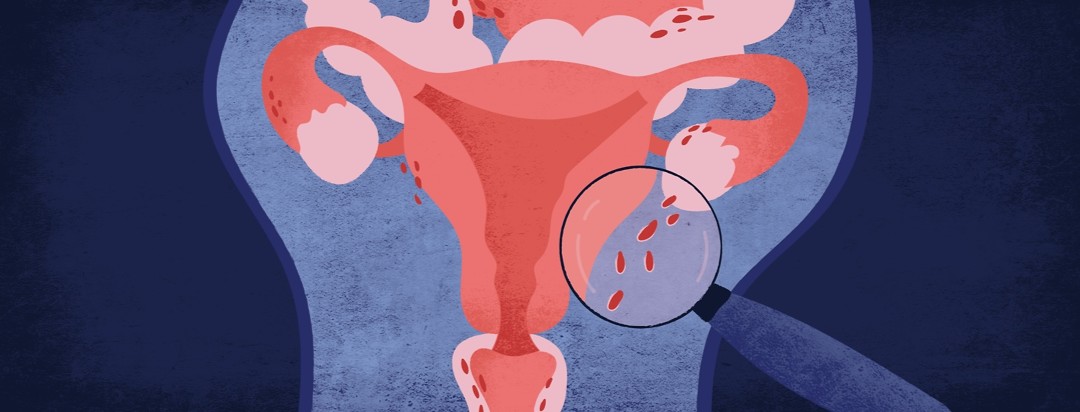Deep Infiltrating Endometriosis: Rare or Just Underdiagnosed?
Endometriosis is a condition in which tissue like the lining of a woman’s uterus grows outside the uterus. The tissue reflects the woman’s menstrual cycle. It thickens each month, then breaks down and bleeds during a woman’s period. The blood cannot escape from the body and can lead to cysts, lesions or sores, pain, and infertility.1
Deep infiltrating endometriosis occurs when endometrial tissue invades 5 or more millimeters below the surface of the peritoneum, the lining of the space inside the abdomen. There, it may be deep within the bowel, bladder, vagina, or other organs. Deep infiltrating endometriosis also is called extrapelvic endometriosis because it may happen in any organ outside the pelvis.2
Research - How common is extrapelvic endo?
Doctors have long thought that deep infiltrating endometriosis is rare. Until recently, they believed that it happened in only 1 to 5 percent of women with endometriosis.3
Recent research, however, indicates that this disease is more common than previously thought:
- Research reported in 2019 found more cases than expected. The researchers found 920 cases of extrapelvic endometriosis located in organs such as the kidneys, liver, lungs, brain, and even the nose.4
- A paper published in 2017 found extrapelvic endometriosis in 20 percent of women with endometriosis. The most common locations were the gastrointestinal tract and the urinary system.5
- Gastrointestinal involvement happens in up to 37 percent of women diagnosed with endometriosis, according to a 2016 study.6
- Urinary tract endometriosis affects up to 12 percent of women with endometriosis, a paper published in 2015 said.7
- In Belgium, researchers estimated that up to 10 percent of women with pain and infertility had deep endometriosis. They published their study in 2016.8
Diagnosis is difficult
Even if deep infiltrating endometriosis is not truly rare, diagnosis is difficult. For any endometriosis, it takes an average of almost 12 years for a woman with symptoms to be diagnosed.9-10
Endometriosis may affect more than 11 percent of women. That’s about 7 to 10 million women in the United States, or three times the population of Chicago. At least 200 million women around the world have endometriosis.11-12
With that many women having endometriosis, you would think doctors would be familiar with it and diagnose it quickly. Some doctors can. Studies have shown that experienced clinicians can predict the presence of endometriosis based on history and physical exam in 80 percent of cases.13
Symptoms vary from person to person
Endometriosis is a puzzling disease with varied symptoms. Up to 20 percent of women with endometriosis have chronic pain conditions, such as painful bladder syndrome, fibromyalgia, lower back pain, and migraines.4,14
Deep infiltrating endometriosis has even more diverse symptoms:
- Most women with deep endometriosis have severe pain, but some large lesions do not hurt.
- Most deep endometriosis lesions do not grow, but some grow fast.
- In urinary tract endometriosis, some patients have no symptoms. But a ureter – the duct carrying urine from the kidney to the bladder – may become completely closed over time. That can result in the kidney’s loss of function.
- Bowel endometriosis can cause constipation, diarrhea, bloating, pain with bowel movements and sexual intercourse, and bloody stools. But some women do not have any symptoms.3,15
Doctor and methods matter
Before diagnosing endometriosis, your doctor must rule out other causes. Unfortunately, efforts to get a diagnosis often begin with doctors who are less familiar with it, such as a kidney or headache specialist.
Recognition of endometriosis also varies by diagnostic method, being lower for examining endo lesions under a microscope, higher for an MRI, and highest for examination by a surgeon.11
There is no good noninvasive test for endometriosis. The gold standard for diagnosis is visual inspection by laparoscopy.1,13 The success of laparoscopic recognition varies with the expertise of the surgeon.16-18

Join the conversation